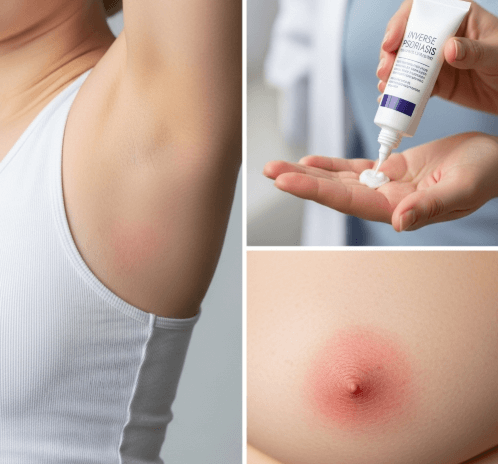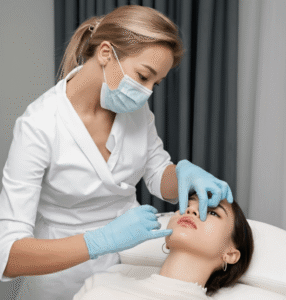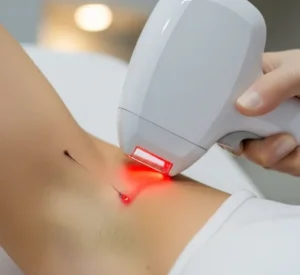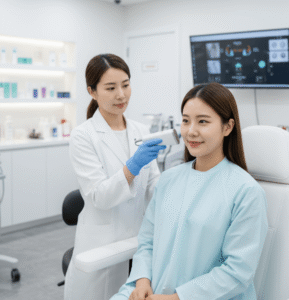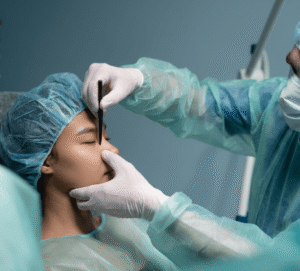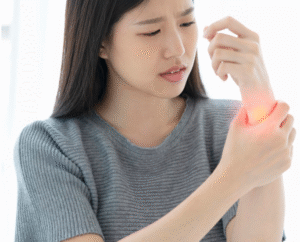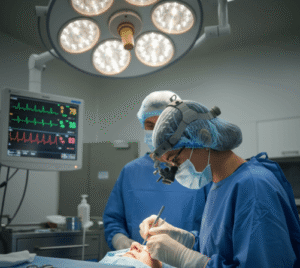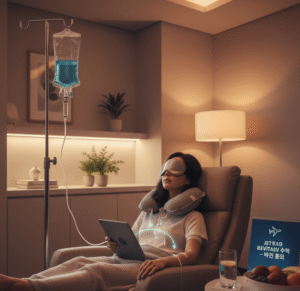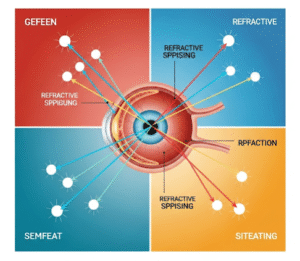What it is
➝ Inverse psoriasis (also called flexural psoriasis) is a type of psoriasis that primarily affects skin folds and moist areas such as the armpits, under the breasts, groin, buttocks, and genital region.
➝ Unlike plaque psoriasis, inverse psoriasis usually appears as smooth, shiny, red patches without the thick scaling.
➝ The condition can be painful, itchy, and prone to irritation or infection, since affected areas often rub against each other and retain moisture.
➝ Management of inverse psoriasis requires a different approach than plaque psoriasis, as standard topical treatments can irritate sensitive skin folds.
Why it’s done
→ To relieve discomfort, itching, and burning sensations in affected areas.
→ To reduce the risk of secondary infections caused by yeast or bacteria, which thrive in moist environments.
→ To prevent skin breakdown and fissures, which can make daily movement painful.
→ To improve self-esteem, intimacy, and quality of life, as inverse psoriasis can be emotionally distressing.
→ In Korea, management is aimed at reducing inflammation safely in delicate skin areas while preventing infections.
Alternatives
→ Topical therapies:
- Low- to medium-strength corticosteroids (short-term use).
- Vitamin D analogs (used cautiously due to sensitivity).
- Calcineurin inhibitors (tacrolimus, pimecrolimus) – preferred for long-term use in folds.
→ Systemic therapies: Methotrexate, cyclosporine, apremilast, or biologics for severe or resistant cases.
→ Phototherapy: Not usually practical in skin folds, but may help if plaques occur in other areas simultaneously.
→ Lifestyle measures: Weight management, moisture control, avoiding friction, wearing loose clothing.
Preparation
→ A dermatologist will perform a thorough skin examination to confirm diagnosis and rule out fungal or bacterial infections that mimic inverse psoriasis.
→ If infection is suspected, skin swabs or cultures may be taken.
→ Patients are often advised to:
- Keep affected areas clean and dry.
- Avoid perfumed soaps and harsh cleansers.
- Use gentle, non-irritating moisturizers.
→ In Korea, dermatologists often integrate skin care counseling as part of preparation, ensuring patients know how to manage skin folds properly.
How it’s Done
→ Topical treatment is the first-line approach:
- Low-potency corticosteroids applied briefly to reduce inflammation.
- Calcineurin inhibitors are often prescribed for long-term maintenance to avoid steroid side effects.
- Antifungal or antibacterial creams if infections are present.
→ Systemic drugs or biologics may be introduced if inverse psoriasis is widespread, severe, or resistant to topical care.
→ Patients are taught application techniques to minimize irritation, such as applying a thin layer and allowing it to dry before covering with clothing.
→ Korean clinics may also use adjunctive therapies, like mild photodynamic therapy or hydrating programs, for resistant cases.
Recovery
→ Symptom relief (reduced itching, burning, and redness) often occurs within 1–2 weeks of correct topical therapy.
→ Long-term management focuses on flare prevention through careful skin care, infection control, and lifestyle adjustments.
→ With proper treatment, most patients maintain good control and can resume normal daily activities without discomfort.
→ Patients often experience improved confidence, comfort in social interactions, and quality of sleep once lesions are under control.
Complications
→ Skin thinning (atrophy) can occur with overuse of corticosteroids in sensitive folds.
→ Secondary infections (fungal or bacterial) are common if moisture is not controlled.
→ Misdiagnosis: Inverse psoriasis can resemble candida or eczema, leading to incorrect treatment if not evaluated carefully.
→ Resistance to topical therapies may occur, requiring systemic or biologic escalation.
Treatment Options in Korea
→ Korean dermatology centers use a stepwise management strategy for inverse psoriasis:
- Start with low-strength steroids or calcineurin inhibitors.
- Add antifungal or antibacterial creams if secondary infection is detected.
- Escalate to systemic therapy or biologics for resistant or severe cases.
→ Korean doctors emphasize gentle, non-irritating skincare routines, including hypoallergenic cleansers and fragrance-free moisturizers.
→ Clinics often provide patient education programs to teach proper hygiene, drying techniques, and safe topical application.
→ In some centers, integrated care includes dermatologists, dieticians, and lifestyle counselors to address weight management and flare triggers.
→ With Korea’s strong reputation in dermatology, many patients benefit from advanced biologic treatments (e.g., IL-23 or IL-17 inhibitors) when inverse psoriasis is severe.
→ Overall, treatment in Korea balances effectiveness with safety in sensitive skin areas, ensuring patients achieve long-term relief with minimal side effects.

